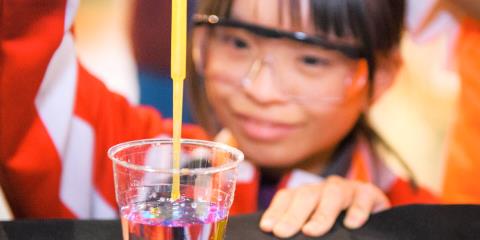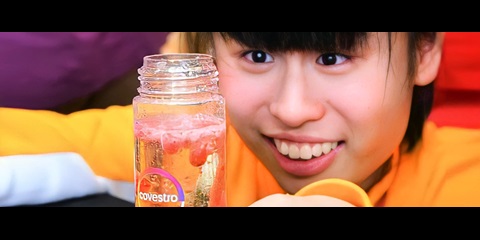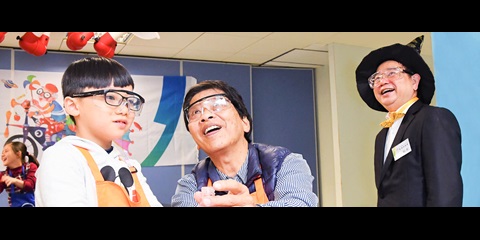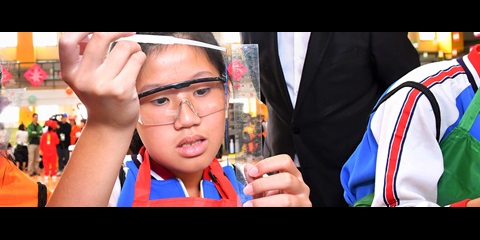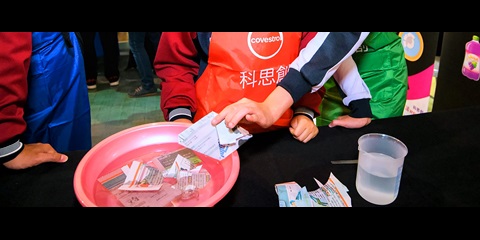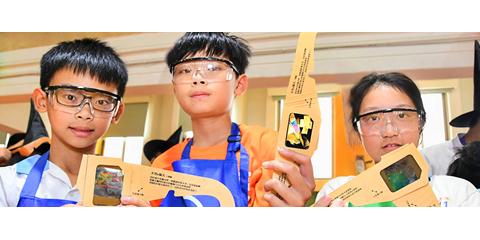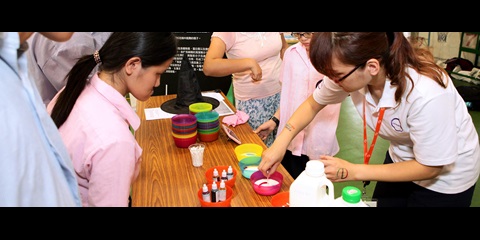
Dance of a disk images
You will need:
- Leaf-shaped disk (1 piece)
- Transparent disk (3 pieces)
- Laser pointer (1 piece)
- 1 sheet of white A4 paper
- A pair of infrared-resistant goggles (preventing damage to eyes by laser reflection)
Step-by-step instructions:
- Put on the infrared-resistant goggles.
- Place the paper on the desk.
- Hold the leaf-shaped disk in one hand and the laser pointer in the other hand, aiming at the disk. Control the laser beam from the laser pointer so that the beam reflection reaches the paper on the desk. Light spots reflected from the disk will appear on the paper. Move the laser pointer up, down, left, and right so that the beam will hit the disk at different angles. At the same time, change the angle to the leaf-shaped disk.
You will see the diverse changes of reflected light spots like stars.
《Little tips for you》
When you see five light spots appear on the paper, it means you have completed this experiment!
How it works:
The main reason why a bubble will burst is because its surface (the bubble’s film) has been damaged. Take a balloon as an example. If you poke the balloon with your finger, it will not burst. However, if you poke the balloon with a needle, it will burst right away. This is because the needle is sharp, meaning that it can damage the surface of the balloon. As soon as a hole is made in the balloon’s surface, the balloon will burst, as a result of the tension around the hole.
When your hand touches the surface of the bubble’s film, the bubble will burst like a balloon being poked by a needle, because your hand is hard. The fibers of the cotton glove, however, are relatively soft, much like soft springs. As a result, the bubbles bounce up and down, instead of immediately bursting.
《A short tale about polycarbonates》
Polycarbonates are a group of polymers that were invented by Covestro's chemist, Hermann Schnell, in 1953. The world’s first music disk was jointly developed in 1982 by Covestro’s optical disk research technology development team, PolyGram Records Ltd., and Philips.
Something extra
Stack three pieces of transparent disk together and apply the beam of the laser pointer from above, shining it down through the disks. Try to change distances and angles between the disks or move the laser pointer. The laser light spots on the paper will move as if they were dancing around, just like an astrological picture with motion!
*Resource come from: NTCU Science Game Lab.








